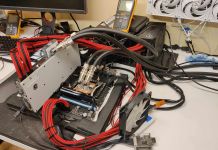Northwestern University and NEC Laboratories America have unveiled a software that actually doubles the storage capacity of physical memory in mobile phones. There is no specific hardware needed as the operating system handles the compression of the data on an on-the-fly basis. When the phone needs the data, the operating system unpacks the data instantly without having any significant impact on the cost or power consumption, and a minimal performance penalty.
The idea was spawned at NEC back in 2004, shortly afterward it decided to team up with the computers scientists at Northwestern University. The CRAMES (Compressed RAM for Embedded Systems) development was led by assistant professor Robert P. Dick, and doctoral student Lei Yang, together with Haris Lekatsas and Srimat Chakradhar from NEC Labs America.
CRAMES divides the physical memory into two parts; one with uncompressed data and one with heavily compressed data. When an application needs data that is stored in the compressed region the application is paused, the operating system uncompresses the data and makes it available for the application in the uncompressed region. The application never knew what happened.
The current implementation uses the LZ0 algorithm, but Yang has developed a new algorithm twice as fast, reducing the performance penalty even further. The new algorithm will be used in future phones from NEC, but in theory it could be added through a software update.
The FOMA N904i (in the picture) is a NEC-made phone and the first to use this technology. More phones will follow.




















Leave a Reply